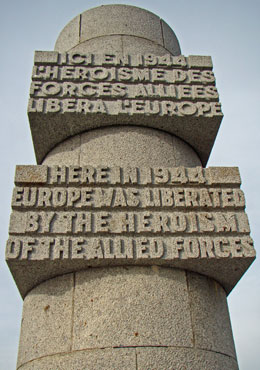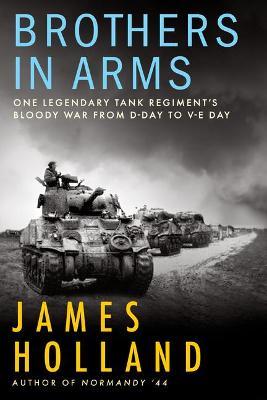“The Sherwood Rangers had begun the war as weekend part-time soldiers, then had been sent overseas on their horses, had performed cavalry charges with sabres drawn, had been converted to artillery, had survived the Siege of Tobruk, had been mechanized and had turned themselves into one of the finest armoured regiments in the British Army. During the war, they amassed an astonishing thirty battle honours, sixteen of them since D-Day: more than any other single unit ever in the entire British Army. … In all, [they] lost 148 men killed and 299 wounded just in the eleven months since D-Day, a tally of casualties which amounted to some 40 percent of the entire regiment….” —Brothers in Arms by James Holland

It’s hard to imagine such a long and destructive conflict as World War II. Those who fought it or lived through it are mostly gone, their experiences recorded in books and movies that tell only a tiny fraction of the story of those years, because the story of those years covered such a vast swath of history and geography and human tragedy.
Adolph Hitler’s Axis powers attacked or invaded Great Britain, France, Belgium, Poland, Czechoslovakia, Denmark, Finland, the Netherlands, Greece, and the Soviet Union. The number of civilians killed and injured, the cities leveled, the families who became refugees or who simply disappeared are beyond imagining. And we know, of course, that there were millions of Jews, elderly, and mentally deficient who were rounded up and executed by the Nazis, unless they were fit enough to become laborers for the German war machine.
Such a staggering horror simply could not be allowed to stand. The fight was joined by young soldiers from Canada, the United States, the British Isles and elsewhere. The great majority who fought in both the Allied and Axis armies were 18-24 year-olds. And consequently, most of the young soldiers who filled the cemeteries at the war’s end died very young.
Historian James Holland has written a number of carefully researched accounts of the war, including “The Battle of Britain,” “Sicily ’43,” and “Big Week.” “Brothers in Arms” follows a British tank regiment from its landing in Normandy through the war’s end in Germany. Through diaries, letters, war records, and interviews, Holland tells the story of the Sherwood Rangers and their bloody slog through France, the Netherlands, and finally, Germany itself.

Brothers in Arms is a story of close friendships formed by men who grew up together and who, too often, died together trying to gain control of some spot on a map they had never dreamed of setting foot on. It’s an utterly tragic account full of love, sacrifice, terror, tragedy, and enormous acts of human kindness in the midst of a time of great insanity.
Holland is a masterful story-teller and a detailed historian. He honors the sacrifices these young men made by giving them names, faces, voices, hopes, dreams, and fears. Holland is not so interested in military strategy as he is in showing his readers the people on both sides of the fight and what the war demanded of them. The history of this part of the war is told through the soldiers who fought it.
War is a protracted episode of senseless human suffering. World War II was a tragedy, but I believe fighting it was a moral necessity. It’s vital that we remember the costly lessons that policies of national arrogance and hubris lead to, so that we can guard against their taking root again. As hard as it was to immerse myself in the awful events of those years, I’m indebted to James Holland for writing his account with great honesty and with a deep commitment to honor the men who fought so far from home.




Comment Policy: All comments are subject to moderation. Your words are your own, but AnotherThink is mine, so I reserve the right to censor language that is uncouth or derogatory. No anonymous comments will be published, but if you include your real name and email address (kept private), you can say pretty much whatever is on your mind. I look forward to hearing from you.